Flycatchers are songbirds that feed mostly on insects that are caught on the wing, including all kinds of flies, as well as insects such as moths, butterflies, crickets, bees, beetles, grasshoppers, wasps, and even spiders and caterpillars. Flycatchers are common worldwide, but here in North America, we are home to a family of Tyrant (New World) flycatchers. These birds make up the largest family of birds in the world, with over 425 species identified.
In Minnesota, there are records of up to 19 of those flycatcher species, though less than a dozen are likely to frequent our state in a given year.
Identifying flycatchers can be tricky—their coloring, shapes and sizes can be quite similar. However, their hunting territories, songs/calls and behaviors can all be helpful as aids in identification.
Below are 5 of Minnesota’s most common species of flycatchers, with some tips on how to see them—and even find them in your own backyards.
Though flycatchers are not likely to come to feeding stations, don’t rule out visits of these insect-gobbling birds to your backyards. Many will come to a source of clean water for bathing and drinking. Others will use a nest box or a cavity in a dead tree for nesting. Most flycatchers also supplement their diets with fruit. Planting fruit-bearing plants will attract flycatchers and songbirds to your yard.
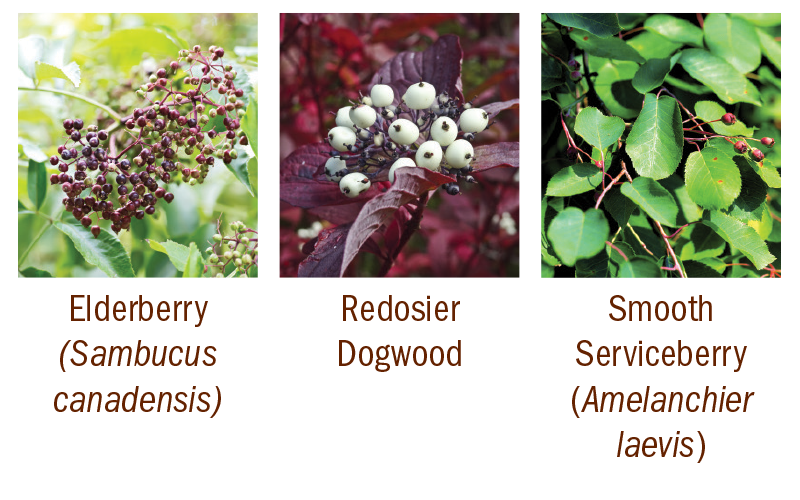
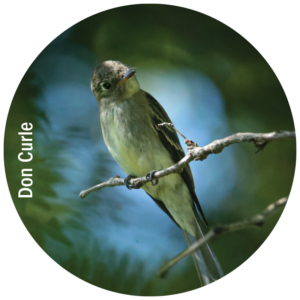
EASTERN WOOD-PEEWEE
Call: “pee-a-wee!”
Appearance: Grayer overall and longer wings than other flycatchers.
Habitat: Forages higher in the trees than Least Flycatchers, but lower than Great Crested Flycatcher.
Most likely to see them in wooded backyards.
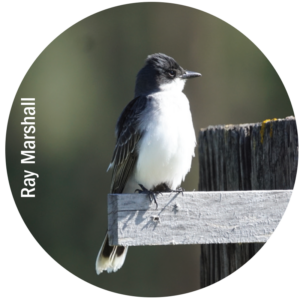
EASTERN KINGBIRD
Call: sounds like an electric spark or zap.
Appearance: Dark gray with white underparts and distinct white tip on tail.
Habitat: Often perches on wires and fences in open areas to hunt over tops of grasses.
Relies on insects and fruit for moisture.
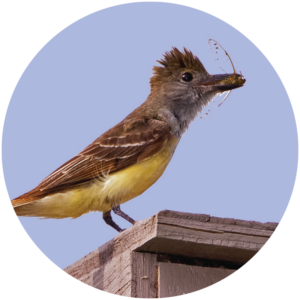
GREAT-CRESTED FLYCATCHER
Call: loud, recognizable “Wee-eep” .
Appearance: Medium size, cinnamon wings and tail, bright yellow belly, olive-colored back.
Habitat: Prefers broadleaf forest edges. Hunts insects in the high tree canopy.
Will use nest boxes.
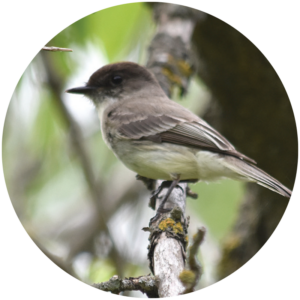
EASTERN PHOEBE
Call: Phoe-be or fi-bree.
Appearance: No eye-ring or wing bars; all dark bill and dark head. Downward tail-bobbing is a behavioral identifier.
Habitat: Typical in streamsides, bridges, farms, roadsides, towns.
Uses buildings, overhangs, and nest structures to build grass and mud nest.
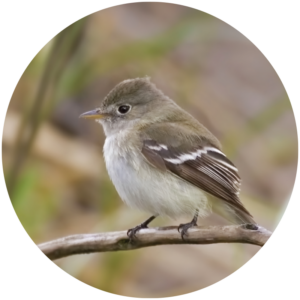
LEAST FLYCATCHER
Call: che-BEK or whit.
Appearance: Small, grayish, pale below, bold white eye-ring. Active tail flicking is a behavioral identifier.
Habitat: Frequents farms, orchards, groves, open woods.
Among other Empidonax flycatchers, voice is the best identification tool.
By Guest Contributor KATRINA HASE
Adapted from the August/September 2022 edition of the Bird’s-Eye View Newsletter

